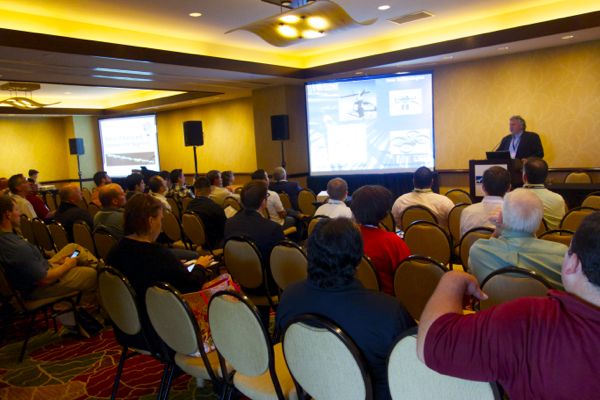SPAR International, the week when I talk the most and sleep the least, is once again behind us. This year saw the largest SPAR conference to date, with more than 1000 attendees and the largest-ever exhibit floor. Many of us have sensed that SPAR is in a bit of a transitional phase as the adoption of 3D imaging technologies is crossing into many workflows outside of the engineering department. This was quite obvious at the show with a new tag line of “3D Technologies for Asset Actualization” versus the “3D Measurement & Imaging Conference” of years past. The new push seems to be toward business case studies as opposed to technical case studies.
For example, this year there was a new “Business Considerations” track and Ralph Rio of ARC Advisory Group’s keynote was squarely focused on the why of 3D imaging as opposed to the how. While many of us want to know the how, let’s face it, most potential end users of 3D data do not need to know how it all works to be able to take advantage of these technologies. Making them learn the how first only serves as a check on market growth, in my humble opinion…
Without further ado, here are my top takeaways from SPAR 2015:
We can keep some secrets. For the past 3.5 years I’ve worked for a company that is a value-added reseller for several manufacturers including Leica and Z+F. Both of them announced the release of new laser scanners at SPAR 2015 and I can honestly say that I had not heard a word from any of their staff about these new releases. Not having personally used any of the new tech, I’ll refrain from opining about them off of their tech spec sheets alone, however, I will definitely review them all as soon as I can get my hands on them. I do have to say that Z+F’s LaserControl Scout was the biggest surprise to me in the new announcements category. I’m seriously excited about the workflow changes that should be possible with Scout.
Everyone wants out of engineering. Well, they still want to work there too, but I can’t tell you how many times someone told me that they were looking outside (or happy with their decision to start looking outside) of the engineering department for projects. The benefits are obvious. Visualization projects offer easier deliverables due to lower accuracy requirements. Most other silos within an organization work on projects that are not necessarily tied to a capital improvement. As a former service provider, I can honestly say that I always welcomed steady work even when it potentially conflicted with major projects. Those are hard to find in engineering.
Looking toward a new lifecycle. Once again, Ralph Rio nailed it in his keynote. The current lifecycle model wastes a lot of data. So much of our data is captured for a capital project and once that project is over, the data is shelved. If you collected the data just to verify something, then the data is considered dead when the project is over. Switching from this linear model to a circular lifecycle model would add a tremendous amount of value to our data—asset management versus data capture, if you will. As I said before, the “why” instead of the “how.”
Security concerns may be the next challenge. When we hear the term “security” we normally think passwords, firewalls, and hackers. However, when data breaks out of one silo and is used industry wide “security” takes on a much more nuanced meaning. Are the guys in compliance that want to see the data allowed to look at all of it? Or does it contain assets that they are not authorized to see? What about the sub-contractor that is repairing the HVAC? We all have stories of security taking our cell phones so we can’t snap pictures while helping us roll a scanner into the building. The scans themselves didn’t really matter from a security standpoint, because most clients don’t use the point cloud directly. However, that is changing. Autodesk’s ReCap numbers are off the chart and I met plenty of people that were excited to talk about other groups “finally” using their data. Like most things, it won’t be a problem until it is. Trust me, it will be.






